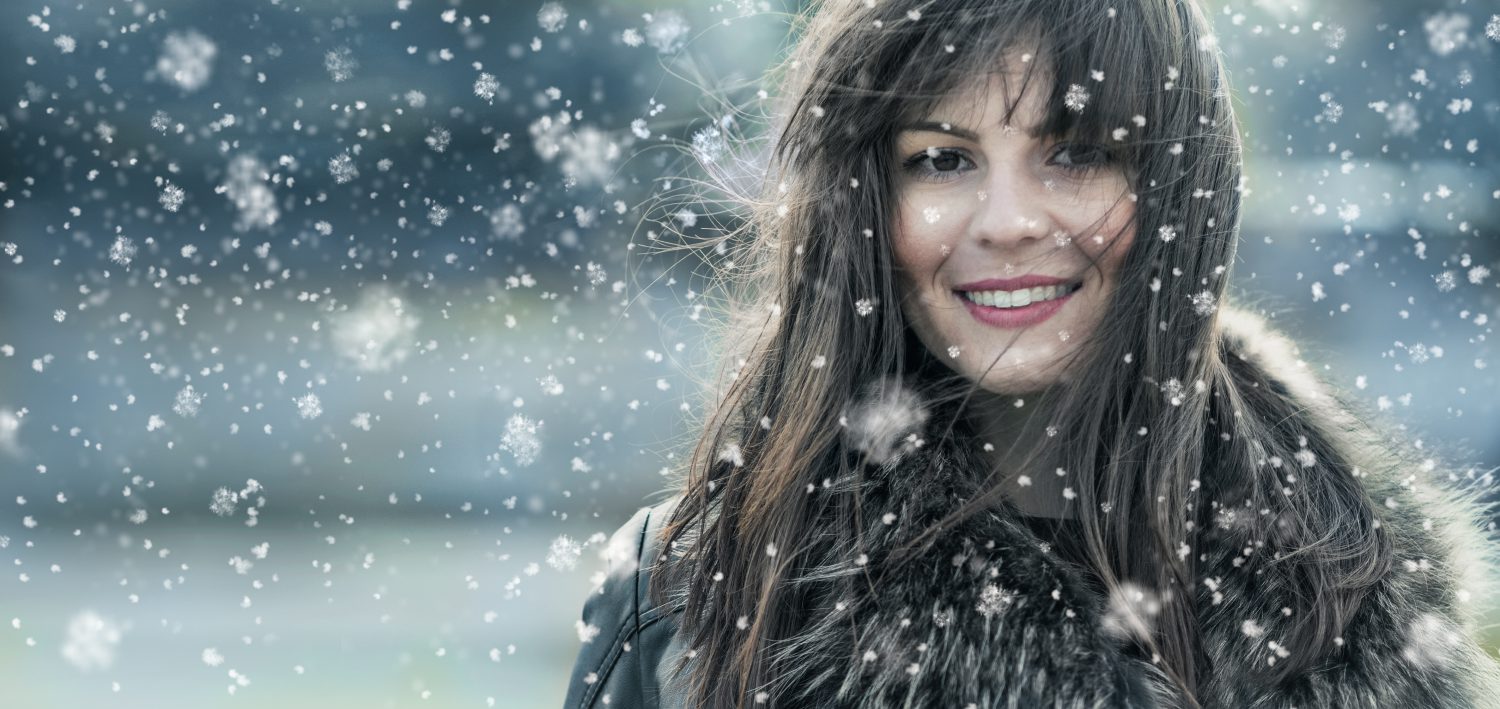The winter’s coming closer and closer, and it’ll surely surprise everyone. But we, hair lovers, are ready for blizzards, frosty air and low temps. If you fancy becoming one of us and learn about hair care, I encourage you to read on. Ready? Steady? Go!
How winter affects hair & scalp?
Winter aura doesn’t benefit your scalp. Cold air and minus temperatures slow down the functioning of sebum glands that provide hair with a moisturising, protective coat. Result? Strands become more vulnerable to weather conditions which lead to dryness, static and loss of sufficient moisture. Hair’s weaker, prone to hair loss and damage. To make things worse, winter’s the season when we’re generally more prone to becoming ill. The use of medication, including antibiotics, may additionally weaken hair.
Oily & Static Hare Care Routine in Winter
Hair gets oily under a hat because scalp overheats whereas sebaceous glands produce more sebum. This type of strands must be washed as often as necessary. Even every-day hair wash won’t do any harm. Use delicate shampoos designed for oily hair and use a strongly-clarifying product once in a while.
Also, try light, rinse-out masks and conditioners. Hair is static because it stays in contact with artificial fibers (scarves, hats) which are negatively charged. Dry, damaged hair’s more exposed to frizz. If you really want to upgrade its condition:
- use a mask for nourishing bulbs, sealing hair cuticles, smoothing the surface and moisturizing scalp once a week;
- use products containing anti-static ingredients;
- wear hats and scarves made from natural fibers which are less prone to static;
- run damp fingers through the strands to make static hair smoother;
- in your brushing routine, use natural bristle or metal brushes and combs; for blow-drying – ionic dryers.
How to care for dull, volume-less & dandruff-affected hair in winter?
Hair lacks volume because it stays under the hat. To prevent that, use root-lifting hair products, blow dry using a cool airflow and flip your head over. Also make sure your hair’s perfectly dry before going out because wet strands are more likely to lose volume.
Wearing a hat triggers the occurrence of dandruff as well. The scalp gets warmed up thus the fungus responsible for this dermatological ailment develops. If you’re struggling with dandruff, use a zinc or tar-infused shampoo – such a product regulates the work of sebaceous glands. Also, you should give up on hair dyes and styling primers as they may irritate scalp and cause dandruff. In your hair care, you’ll make use of lightweight moisturising products.
Winter Hair & Scalp Care Rules
- Hat
Even though it spoils the hairdo, it protects hair and scalp from irritation and poorer condition. Too bad, artificial material of hats triggers static and may cause hairline acne. If you don’t want to unnecessarily risk such imperfections, choose wool or cotton hats. Wear wider hats so that you can hide all strands. Wash them in an anti-static product once a week. - Hair Wash
You should wash your hair as often as necessary in winter. The rule is most true for oily hair. If you want to keep the hairdo fresh and stunning, use mild SLS-free shampoos without other dehydrating ingredients in (even daily) hair care. Their action could make hair dry and weaken strands or the other way round – intensify oiliness. - Hair Blow-Dry Routine
In winter, hair’s exposed to the action of heaters and air-con at home, the office or in the car. That is why blow-drying with a dryer may additionally worsen its condition. Still, if there’s no other option, set a cool airflow and an ionic option. What else can you do? Plan your day so that you don’t have to wash hair in the morning or right before a meeting. That’s one thing. Secondly, you can partly blow-dry and then let hair air dry. - Brushing & Hairstyling
I’ve heard that tying hair back makes a perfect choice in winter time. After taking the hat off, your hairdo looks quite normal whereas your hair isn’t getting damaged. A braid is an example of a great winter hairstyle. Still, before you make it, rub your favorite hair oil in. It’s going to make braiding easier and protect strands from frosty air. Also, use combs and brushes made from natural material, not plastic. - Diet
In winter, enriching a diet with fruit, vegetables, sprouts, oats, nuts and seeds pays off. It is important that you drink around one liter of mineral water a day. If you fail to provide your body with fresh fruit and vegetables, eating frozen food makes a good alternative. You should add fish oil, evening primrose oil capsules or syrups to your diet.
Leave comments with your winter hair care routine rules. Maybe you have some favorite products and tricks you would like to share with hair care beginners?


Leave a Reply